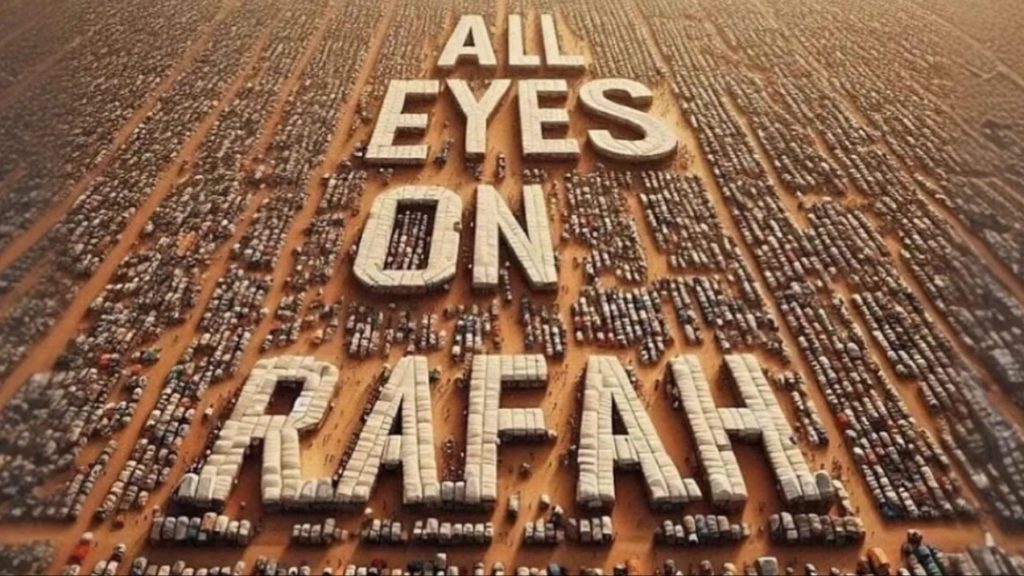
The image that received over 44.7 million shares on Instagram spread an awareness message and caught our hearts is AI generated, therefore, keep all eyes on Rafah.
What Happened in Rafah?
On Sunday, an Israeli attack in Rafah, a city in southern Gaza, hit a place where displaced Palestinians were staying in tents. Palestinian medical teams said the attack caught the tents on fire. At least 45 people were killed. Sky News confirmed videos showing many bodies being removed from ruined buildings, and in one specific content, we see a man holding the body of a child who had been beheaded.
Israeli Prime Minister Benjamin Netanyahu called the attack a “tragic mistake.”
Following the devastating attack on Rafah, Israel’s Prime Minister, Benjamin Netanyahu, took to the stage to address this incident, calling it a “tragic mistake.” In the past eight months, the world has taken to the streets, attended congressional sessions, and protested at establishments supporting the Israeli regime to oppose the war on Gaza and the displacement of Palestinians.
Evidently, students and people of all ages are revolting against Netanyahu, calling him “genocidal” and blaming the US for the continuation of the war. The US has heavily invested in the Iron Dome, which, according to the National Security Studies, costs between $40,000 to $50,000 per missile and is still prone to disruptions at times. This is a tragic mistake, not the genocide that you have been committing.
As a result, a viral image was shared.
Being an Instagram user, you have probably seen or shared the image of lines of tents that stretch into a distance on sandy ground, with white structures that spell out “All eyes on Rafah”.
The shares of the image on Instagram have clocked the number of people who have posted it to their stories: more than 48 million as of Thursday morning.
Behind “All eyes on Rafah”
The secret of the image lies in its origin; it is generated by artificial intelligence. This piece represents the pioneering wave of viral activist art produced through the capabilities of AI technology.
According to Marc Owen Jones, a misinformation expert and associate professor of Middle East studies at Qatar’s Hamad Bin Khalifa University, he stated that the image “definitely looks AI-generated.”
There are several clues that All eyes on Rafah image was generated by AI. First, it doesn’t look like a real photo. The shadows might seem strange, and the layout of things like a tent camp could be too perfect and evenly spread out, showing a repeated pattern typical of AI.
Even though this image has become very popular, real photos and videos showing attacks and their effects are often hidden behind warnings for sensitive content on social media.
Activists are questioning why a generated image is getting so much attention instead of real footage showing what’s happening in Gaza. This is due to the Meta having to abide by the EU’s rules.
Concerns Over Concerns
In cases like the Palestinian war that has been taking place since October 8, 2023, the AI-generated image titled “All Eyes on Rafah” and its widespread reach is remarkable. But what about other AI-generated images that are also reaching large audiences, such as those depicting minors negatively?
Everything in life has a positive and negative side. This time, AI-generated images had a positive impact, allowing people to stay informed about what is happening in Palestine, despite social media and the media trying to dim the light on it.
The moral of this is to keep all eyes on Rafah.
Inside Telecom provides you with an extensive list of content covering all aspects of the tech industry. Keep an eye on our Tech sections to stay informed and up-to-date with our daily articles.